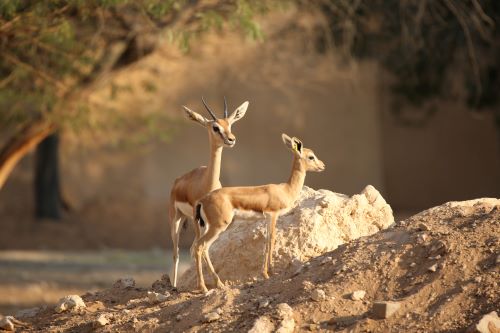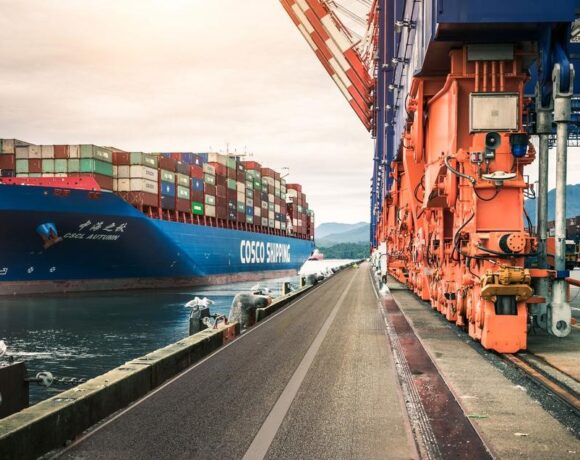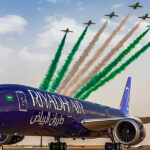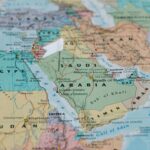Nine globally significant Key Biodiversity Areas identified in the UAE

In a significant milestone that underscores the UAE’s dedication to sustainability during the Year of Sustainability and its ongoing commitment to preserving nature and protecting endangered species, the Ministry of Climate Change and Environment (MOCCAE) has announced the designation of nine globally significant key biodiversity areas (KBA) in the UAE. Approved by the ‘Key Biodiversity Areas Secretariat’ these areas are of strategic biological importance globally and are home to numerous endangered plants and animals.
The project identifying the nine KBAs in the UAE was reviewed by His Highness Sheikh Mohamed bin Zayed Al Nahyan, President of the UAE, yesterday during a meeting on the occasion of World Environment Day. His Highness met with a group of young people, entrepreneurs and leaders in the field of environment who presented pioneering initiatives and ideas aligned with the UAE’s approach to supporting sustainability through innovation.
The nine newly appointed KBAs include the Arabian Oryx Protected Area in Abu Dhabi; the Marawah Marine Area in Abu Dhabi; Al Yasat Marine Area in Abu Dhabi; Al Marmoom Desert Conservation Reserve in Dubai; the Dubai Desert Conservation Reserve; Wadi Al-Helo in Sharjah; Khor Fakan and Shark Island in Sharjah; Wadi Al-Bih in Ras Al Khaimah; and Siniyah Island and and Khor Al Beidah in Umm Al Quwain.
This achievement highlights the UAE’s global position in identifying practical solutions to enhance biodiversity by implementing nature-based solutions, thus effectively addressing a range of environmental and climatic challenges. It is the result of a collaboration between the Ministry of Climate Change and Environment and the International Union for Conservation of Nature.
This milestone also underscores the active participation of competent authorities from the UAE’s government and private sectors, along with the dedicated efforts of a team comprising 75 male and female national and resident personnel. The teams attended training sessions conducted by international experts and were guided by the Ministry to execute the project effectively.
The designation of the nine KBAs was completed last year, following the global standard for identifying such areas. These sites have been officially published on the World Database of Key Biodiversity Areas.
Her Excellency Dr. Amna bint Abdullah Al Dahak, Minister of Climate Change and Environment, said that the UAE, under the leadership of His Highness Sheikh Mohamed bin Zayed Al Nahyan, President of the UAE, is committed to advancing progress and prosperity by playing a significant role in safeguarding our planet and ensuring its sustainability. This approach aligns with the vision of the late Sheikh Zayed bin Sultan Al Nahyan, who placed significant emphasis on environmental conservation.
Her Excellency Dr. Al Dahak said: “The designation of nine globally significant key biodiversity areas in the UAE is the result of the nation’s initiatives during the Year of Sustainability and its commitment to biodiversity conservation and nature protection. The UAE has demonstrated exceptional endeavours in protecting living creatures from extinction, both locally and globally.”
HE added: “The identification of these key biodiversity areas, alongside other nationwide initiatives, strengthen the UAE’s position as a global leader in sustainability. It also underscores the importance of collaborative efforts with local and international partners to enhance the establishment and expansion of reserves that serve as an effective nature-based solution to address climate change. Such endeavours contribute to the development of sustainable societies and will enable future generations to understand the importance of nature in our lives.”
H.E. Dr. Al Dahak concluded: “Such conservation projects in the UAE play a crucial role in raising public awareness about the importance of biodiversity and mitigating the adverse impacts of its depletion. These projects are instrumental in informing and shaping policies that align with the UAE’s economic objectives. With growing awareness and dedication, the UAE remains at the forefront of biodiversity protection efforts and is actively working to improve and rehabilitate natural habitats for a wide range of species, benefiting both current and future generations.”
Her Excellency Dr. Amna bint Abdullah Al Dahak expressed her gratitude to the local and international stakeholders involved in the successful project to designate nine globally significant key biodiversity areas in the UAE. She emphasised that this achievement serves as a catalyst for ongoing endeavours to enhance conservation programmes aimed at safeguarding nature and preventing the extinction of rare species. This initiative represents a pioneering Emirati global experience in biodiversity conservation.
Global and Regional Excellence
The nine KBAs have several features that have positioned them among some of the most significant biodiversity sites regionally and globally. Two of these biodiversity sites have been identified for the Arabian Gazelle, the Arabian Sand Gazelle, and the Arabian Oryx. These are the first KBAs for these mammals in the world.
The UAE is home to the largest number of Arabian oryx in the world, after being on the brink of extinction in the 1970s. The Arabian Oryx is found in both Al Marmoom Desert Conservation Reserve in Dubai and the Arabian Oryx Protected Area in Abu Dhabi.
Additionally, two globally significant KBAs have been identified for the Dugong (sea cows). These sites are the first globally significant KBAs for sea cows in the Middle East. The UAE hosts the second largest gathering of sea cows in the world, found in both Al Yasat Marine and Marawah Marine areas.
Furthermore, three KBAs for three endemic species of Geckos (Asaccus caudivolvulus, Asaccus margaritae and Ptyodactylus Ruusaljibalicus) were identified and these are the first KBAs for Reptiles in the UAE.
Five of these key sites are fully protected, accounting for an average of 98% of the KBA area coverage by Protected Areas in the UAE.”
The designation of KBAs contributes to raising the mean area that is protected in terrestrial sites important to biodiversity indicator from 51.55% to 98.08%, mean area that is protected in marine sites important to biodiversity indicator from 48.61% to 98.17%, and Average proportion of key biodiversity areas covered by protected areas, from 37.59% to 98.13%.
The International Union for the Conservation of Nature (IUCN) is the world’s leading environmental organization and the largest global institution in terms of natural information. The IUCN operates in more than 160 countries and includes over 1400 members, including governments, governmental and non-governmental organizations, scientific bodies, and indigenous peoples’ organizations.
Key biodiversity areas play a crucial role in contributing to the protection of biodiversity from extinction and maintaining its stability. These sites provide a safe environment for many plant and animal species and support ecological balance by sustaining ecosystems and providing essential natural resources. Additionally, they offer natural environmental conservation such as air and water purification, soil quality improvement, carbon storage, and serve as a genetic resource for plants and animals.
Last Updated on 9 months by News Desk 2













